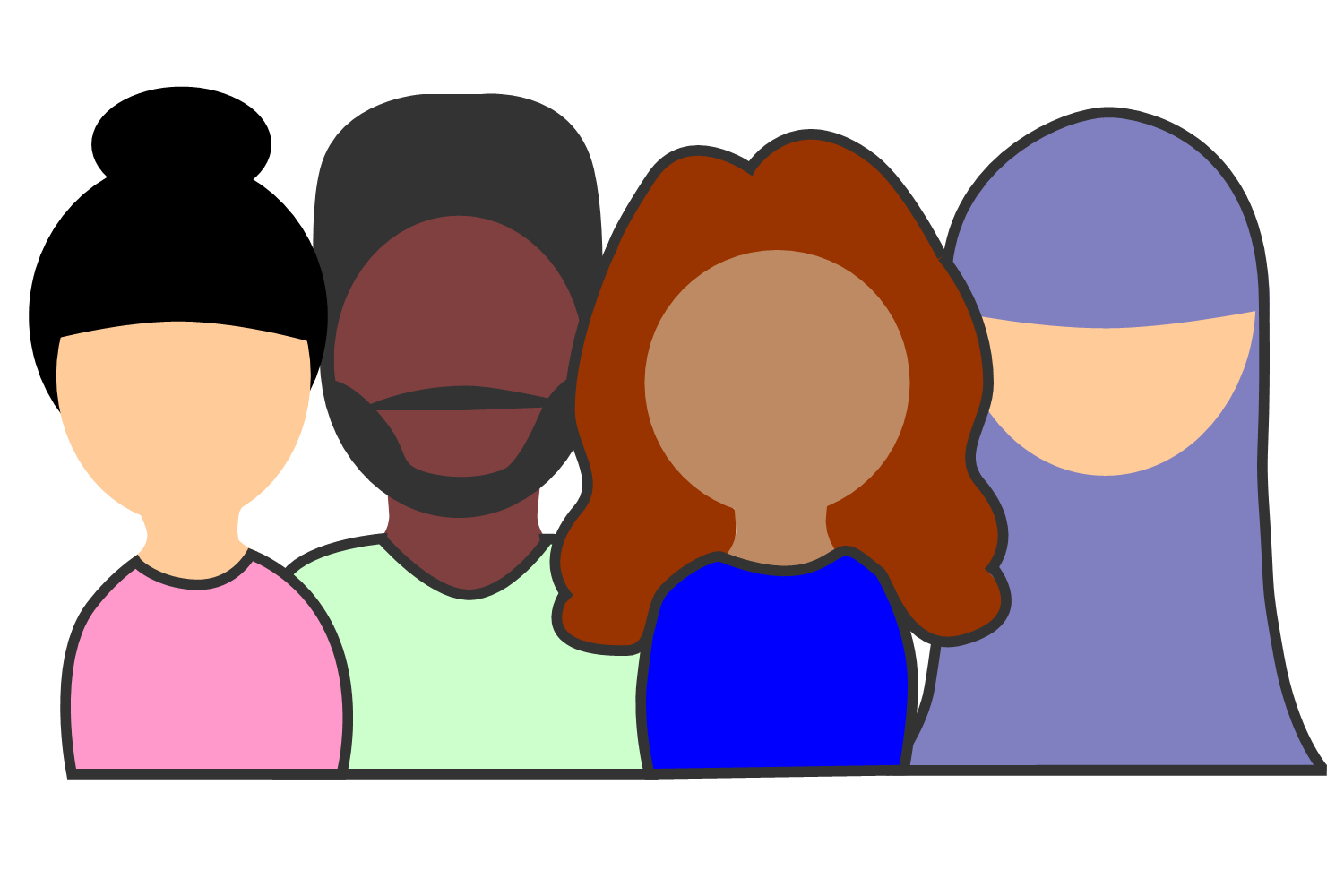Let's talk about...
Use of models to understand racial & ethnic health disparities
Historically, there have been many attempts to empirically explain racial and ethnic health disparities using models, some more successful than others. While discussing this topic, it is important to keep in mind some of these models, especially the racial-genetic model, are considered outdated with considerable opposition; therefore, we present these models in the form of a critique.
Racial-Genetic Model
This was one of the first models used to study racial and ethnic health disparities. The racial genetic model proposed there were gene structures that contributed to health disparities. This model has been highly criticized, primarily because modern genetic testing suggests race categorization is a social, not a biological construct. This is because no single genetic difference has been identified across one race. Further, research has shows when we factor in environmental effects, these provide strong contrary evidence to the racial-genetic model. For example, low birth weight (LBW) is higher for Black women compared to white women in the United States. However, this trend varies by birth country of the mother; for example, African born Black women have similar LBW values as US born white women. This points towards an environmental factor to explain a large portion of this health disparity (Dressler, Oths, and Gravlee, 2005).
Health Behavior Model
The next model is the Health Behavior Model, in which health disparities are proposed to be the results of behaviors voluntarily adopted by individuals. This concept has been highly explored in hypertension research. However, this model still does not do an effective job at accounting for health disparities. For example, even though obesity rates are higher in Black versus white women, when obesity is controlled for, the rates of hypertension remain higher in Black compared to white women (Dressler, Oths, and Gravlee, 2005). This suggests a different underlying factor is influencing hypertension disparities.
Socioeconomic Status Model
The socioeconomic status model proposes racial and ethnic health disparities are in reality confounded with socioeconomic status health disparities. While socioeconomic status does play a large role, research shows controlling for socioeconomic status does not fully mediate the relationship, only partially (Dressler, Oths, and Gravlee, 2005).
Psychosocial Stress Model
The Psychosocial Stress Model states health disparities are due to stressors associated with institutional and interpersonal racism. This model does account for a greater proportion of health disparities. The primary critique is the difficulty measuring these stressors in research settings. In addition, these measures are often confounded by coping responses. Discussion of the psychosocial stress model warrants understanding of risk factors of implicit biases, described next.
Risk factors of implicit biases
(1) Ambiguous situations: stereotypes are commonly used to disambiguate situations (Dovidio and Gaertner, 2000)
(2) Low effort cognitive processing: use of more effortful and deliberative cognitive processing relies less on biases (Bodenhausen, 1990)
(3) High-stress decision making environments: this includes other factors such as fatigue, time pressure, and distraction (Keinan, 1987; Sherman et al., 1998; van Knippenberg, Dijksterhuis, & Vermeulen, 1999)
(4) Lack of evaluation: when those in leadership positions do not provide feedback, individuals are more likely to use biases (Tetlock, 1983)

Evidence-based techniques to lessen your own biases
Use active and effortful information processing techniques, this requires remaining mindful of one’s cognitive processes (Seamone, 2006). This can be accomplished by either writing or verbalizing how you are arriving at your judgement and implementing checklists that run through different bias-reducing techniques (e.g. perspective taking). Perspective-taking means imagining oneself in another person’s shoes (Galinsky & Moskowitz, 2000).
It is also important to grow a greater appreciation and sensitivity to individual and group differences and investigate cultural perspectives (Richeson & Nussbaum, 2004). Disregarding differences, or using the “colorblindness” approach has empirically been shown to produce a rebound effect—increasing implicit biases (Macrae, Bodenhausen, Milne, & Jetten, 1994).
References
Bodenhausen G. (1990). Stereotypes as judgmental heuristics: Evidence of circadian variations in discrimination. Psychological Science, 1, 319-322.
Dovidio, J., & Gaertner, S. (2000). Aversive racism and selection decisions: 1989 and 1999. Psychological Science, 11, 319-323.
Galinsky, A., & Moskowitz, G. (2000). Perspective-taking: Decreasing stereotype expression, stereotype accessibility, and in-group favoritism. Journal of Personality and Social Psychology, 78, 702-724.
Keinan, G. (1987). Decision making under stress: Scanning of alternatives under controllable and uncontrollable threats. Journal of Personality and Social Psychology, 52, 639-644.
Macrae, C., Bodenhausen, G., Milne, A., & Jetten, J. (1994). Out of mind but back in sight: Stereotypes on the rebound. Journal of Personality and Social Psychology, 67, 808-817.
Dressler WD, Oths KS, Gravlee CC. Race and Ethnicity in Public Health Research: Models to Explain Health Disparities. Annual Review of Anthropology. 2005;34(1):231-52.
Richeson, J., & Nussbaum, R. (2004). The impact of multiculturalism versus color-blindness on racial bias. Journal of Experimental Social Psychology, 40, 417-423.
Seamone, E. R. (2006). Understanding the person beneath the robe: Practical methods for neutralizing harmful judicial biases. Willamette Law Review, 42, 1-76.
Sherman, J., Lee, A., Bessenoff, G., & Frost, L. (1998). Stereotype efficiency reconsidered: Encoding flexibility under cognitive load. Journal of Personality and Social Psychology, 75, 589-606.
Tetlock, P. (1983). Accountability and complexity of thought. Journal of Personality and Social Psychology, 45, 74-83.
